
Phoenix rising


“Forget it! It’s simply not possible in a regular 4×4 vehicle, despite your Defenders being capable – you’ll destroy them trying to do it,” says Erik Mararv, African Parks’ regional operations manager for Central Africa.
Erik knows what he’s talking about; he was born in the Central African Republic (CAR) and has spent a large chunk of his adventurous life there. He’s also one of the founders of the Chinko Project – the final African Parks-managed protected area left to complete on this Afrika Odyssey Expedition.

Renowned African explorer Kingsley Holgate and his expedition team from the Kingsley Holgate Foundation recently set off on the Afrika Odyssey expedition – an 18-month journey through 12 African countries to connect 22 national parks managed by African Parks. The expedition’s journey of purpose is to raise awareness about conservation, highlight the importance of national parks and the work done by African Parks, and provide support to local communities. Follow the journey: see stories and more info from the Afrika Odyssey expedition here.
We’re homeless
Erik goes on to warn us that the last section of the 900km road from Bangui (CAR’s capital) to Chinko is known as The Hole. “The ‘middle mannetjie‘ is so high and the banks so steep on either side that even tough, 6×6 high-clearance trucks are tow-piped together in a sort of push-me-pull-you truck train to get through,” he says. “Some of the mud holes are deeper than the trucks themselves. It’s common for them to get stuck, and the drivers spend days – sometimes weeks – digging, winching and cutting detours through the surrounding equatorial forest.”
Erik continues, “Rebel groups have to be negotiated with for a rite-of-passage and the military must join the convoy for a section. If a truck gets bogged down, it’s difficult to get around because you’ll have to cut your own track through the jungle and that could invite unwelcome attention from the rebels. The only way we can get lighter vehicles to Chinko is to put them in a 20-foot container, weld the doors shut, load them onto a flat-bed lorry and hope for the best. It’s the end of the dry season, the big rains are only a few weeks away, and our team is busy loading the last convoy for this season. Everything has to be trucked to Chinko in 14-tonne loads: drums of aviation fuel, diesel, essential food supplies, and equipment – and we’re in a race against time right now. Your only way to get to Chinko, I’m afraid, is to fly.”

Chinko is surely the most remote of all 22 African Parks-managed protected areas on this vast continent. Seeing our glum looks, Erik lets out a laugh. “Don’t worry, you’re saving the best till last. We’ll pick you up in Bangui and fly you to Kojo Basecamp.”
And so, with Benin’s Pendjari and Park W now behind us, we decide to drive the expedition Defenders across Togo to Ghana to be shipped back to South Africa and fly from Accra to Bangui. But at the Togo border, the s*** hits the fan as a hostile immigration lady rudely points to a notice in French sellotaped to the wall. The land border has, without warning, been closed to foreigners. “Go back,” she says curtly, pointing in Benin’s direction. We try to plead our case but she’s implacable.
Now what!? With the security situation being what it is in the northern areas bordering Burkina Faso, we can’t drive around. It is even more frustrating that tiny Togo is less than 100km wide and only takes a few hours to reach Ghana.
Fortunately, in Africa, you can always ‘make a plan’. The helpful Land Rover agents in Accra agree to dispatch two drivers who, with their ECOWAS (Economic Community of West African States) papers, will be allowed to cross Togo and meet us where we’ve holed up at a friendly, rustic guest house on the beach near the Benin/Togo border, and drive our Defenders to Ghana.
It’s a sad moment to see Moyo (‘heart’ in Swahili) and Isibindi (‘courage’ in Zulu) disappearing down the sandy track. Like hermit crabs, they’ve been our homes for over a year, travelling more than 60,000km on a zigzag, 22-country journey across Africa, and we’ve become very fond of them. What champions! They’ve carried tonnes of kit and humanitarian supplies – malaria nets, Rite to Sight-reading glasses and thousands of Wildlife Art templates for the expedition’s community programmes at each African Parks-managed protected area – and they haven’t missed a beat.
From a vibrant send-off at Lesedi Cultural Village near Joburg last year, across the towering red-sand expanses of Angola’s Iona, and through Liuwa Plain, Kafue and Bangweulu Wetlands in Zambia; along roads less travelled to explore AP’s five resurging national parks in Zimbabwe, Malawi and Mozambique; traversing Tanzania to reach beautiful Akagera and the highest source of the Nile in the Nyungwe forests of Rwanda; racing a storm during a ferry crossing of Uganda’s Lake Albert; nearly succumbing to record floods at Garamba in the DRC; and surviving unbelievably broken roads to reach the largest mammal migration in the world in South Sudan’s Bandingilo and Boma. Then, in this final chapter, tackling the massive distance from Namibia to Zakouma, Siniaka Minia and Ennedi in the Chad route, making short work of thick, sticky mud in the Congo-Brazzaville rainforests to reach Odzala-Kokoua, and onto the powdery sands of the Sahara Desert near the Libyan border. Living up to their nicknames, they’ve taken us through the badlands of Cameroon, a risky crossing of Nigeria and into the jihadist ‘red zone’ of northern Benin. Sand tracks, mud tracks, goat tracks, no tracks, river crossings and months of unrelenting heat and dust… they’ve conquered everything on this conservation, community and culture-themed journey that’s uncovered so many stories of hope for Africa’s wildlife and neighbouring communities. Already, we feel homeless.

Onward to Chinko
This isn’t our first visit to Bangui, the capital of the Central African Republic, which lies on the northern bank of the 1,000-kilometre Ubangi River that flows into the mighty Congo River. Years ago, we arrived here in an old-style Defender as part of a journey through Burkina Faso, Niger, Chad, CAR, and Equatorial Guinea called the All-Afrika Expedition, so named as they were the five remaining African countries that we hadn’t yet explored on our 30-year mission to adventure to all 54 countries on the continent.
Now we’re back again and fired up to reach the final destination of this Afrika Odyssey Expedition – the wildlife refuge of Chinko in the far eastern regions of CAR.
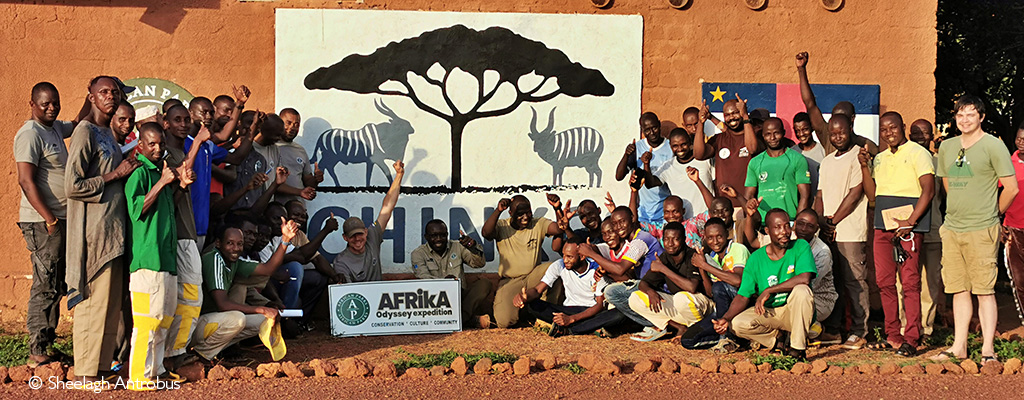
Chinko is in a remote and volatile area that’s so isolated it once served as a secret base for Joseph Kony’s notorious rebel group, the Lord’s Resistance Army.
We overnight at African Parks’ guest house below the hill on which still stands a huge sign declaring ‘Bangui – La Coquette’ (Bangui – the beautiful lady). Approximately the size of France, the CAR was once a playground for the French elite, who came to hunt elephants and bongo antelopes. However, the country has been unstable since its independence in 1960, and whilst it is rich in diamonds, gold, and uranium, it remains one of the world’s poorest nations. When we were last here, it was a breeding ground for mounting opposition and rebel activities against then-president Francois Bozize who was eventually overthrown. That story is brilliantly told in the searingly honest book ‘Battle for Bangui’, which exposes the reckless folly and greed of the South African government, which, in 2013, deployed a tiny force of 200 crack South African troops into the CAR conflict. Badly outnumbered, they fought heroically to hold off an overwhelming force of 7,000 rebels. 15 South African soldiers died, and many more were wounded before they were forced to negotiate a ceasefire at their overrun base. It remains a notorious scandal to this day.
Sadly, the CAR civil war was ongoing, involving successive governments and rebel leaders from the Séléka coalition and Anti-Balaka militias, with thousands killed and over a million people displaced by the violence. Hopefully, those dark days are passing; with a new president in place, Bangui’s streets are alive with pedestrians, motorbike taxis, shops and market stalls. Some street vendors are even selling second-hand, camouflage bullet-proof vests.
But friendly Tunisian-born Zakaria, who handles African Parks’ difficult logistics and is driving us through Bangui, warns us not to take photos. “Don’t even point at anything or the Russian Wagner mercenaries – now called the Africa Corps – will be onto you like a shot,” he says. “Then there’s the heavily armed government troops and the Blue Berets – the UN – which includes 2,000 well-trained Rwandan soldiers and police officers as part of the peace-keeping force.”
“Lots going on here,” Zakaria continues. “I was 10 years with Médecins Sans Frontiers working as a logistics guy in places like Bangladesh, Sudan, Somalia and Afghanistan. I ended up here in Bangui, which was pretty rough at the time. That’s how I encountered African Parks and the incredible work they’re doing at Chinko. So, I made a choice: I’d dedicated a decade to humanitarian work, so I decided to give the next 10 years to conservation. Already, it’s proving an excellent choice.”
Our excitement mounts – just one more park to go – as we’re bundled into AP’s Cessna, piloted by outgoing South African Stephan Fouche. “The flight is about two-and-a-half hours; I’ll let you know when we cross into Chinko,” he says through the headphones with a grin.
The outskirts of Bangui – a sprawling cluster of tin roofs, red dirt roads and the sweep of the Ubangi River – are soon behind us. Once over Chinko, the endless views of this untamed sanctuary that was once a gigantic hunting concession take our breath away. To think that this massive stretch still exists in a country that has been so torn apart by civil war is surely one of the greatest stories of hope for conservation in our time. It’s a huge credit to African Parks and forward-thinking members of CAR’s government.

Chinko: Phoenix rising
“That’s Chinko’s base camp below us,” comes Stephan’s voice. “It’s called Kojo, after the river nearby. As you can see, it’s in the middle of nowhere!” Tiffany Gobbert is there to meet us, and we’re amazed at how organised this remote park HQ is: aircraft hangers, a long line of neat accommodation units, a mess area and kitchen, workshops, fuel tanks and substantial storage sheds, all linked by a spider’s web of well-maintained gravel paths.
Also on hand is CAR-born park manager Jean Baptiste Mamang-Kanga. With 25 years of tough experience in conservation and through Tiffany’s French-to-English translations, we quickly sense his passion and dedication – not only for protecting this unique ecosystem but also for improving the lives of people around Chinko. Spanning a colossal 55,700 km2, it is the most remote and uninhabited wilderness area left in tropical Africa and has a story of revival like no other.
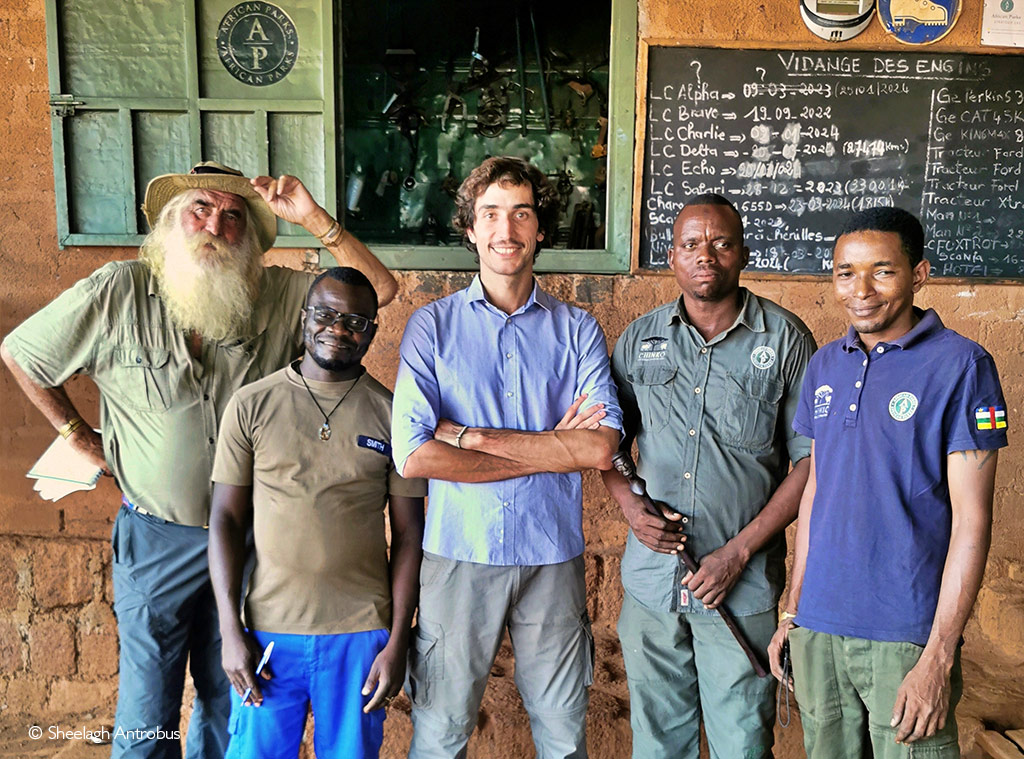
For nearly 50 years, this vast landscape, flanked by the DRC in the south, Sudan in the north and South Sudan in the east, endured the onslaught of lawless exploitation by war rebels, ivory poachers and masses of armed Sudanese cattle herders, who burned vast areas for grazing. 95% of the wildlife was wiped out.
As we bump along a muddy track to reach the Kojo River for the 22nd and final collection of symbolic water in the Afrika Odyssey Expedition’s calabash – Defassa waterbuck scattering, buffalo glowering from thick undergrowth and swatting persistent tsetse flies – Jean Baptiste tells us that since African Parks’ involvement began ten years ago, the wildlife has begun to return. Holding the battered calabash aloft like an Olympic torch, he proclaims in French, echoing Erik’s words, “You’ve saved the best till last!”
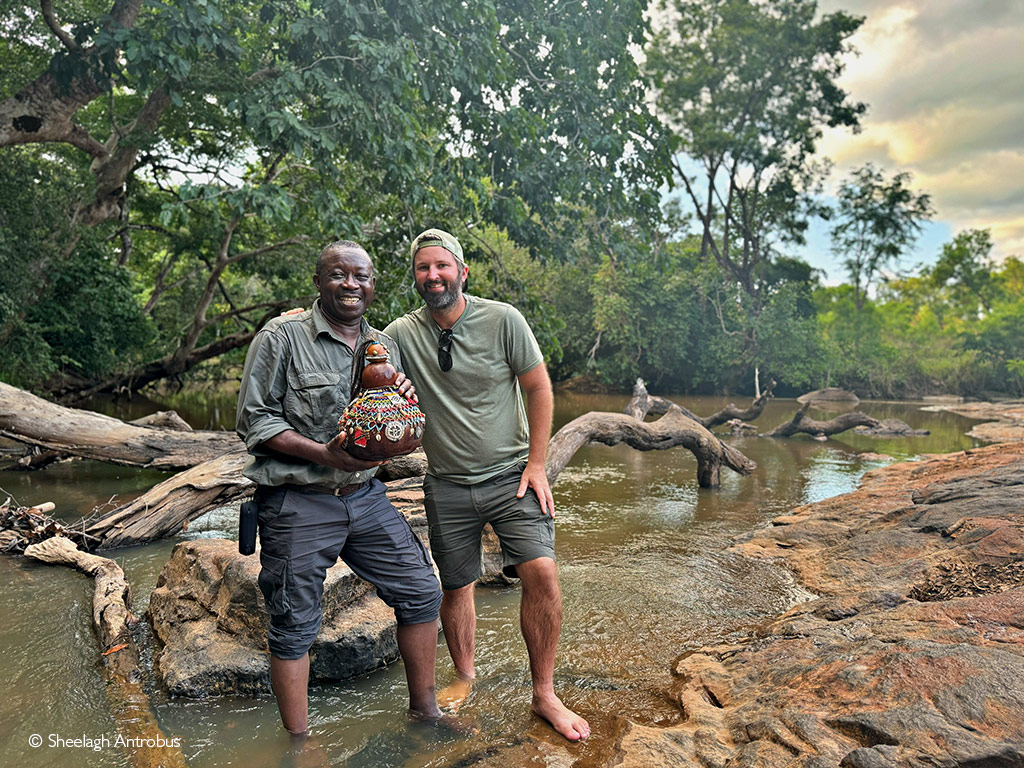

Chinko is now one of the only protected areas in equatorial Africa where both forest and savannah elephants co-exist. It’s become a stronghold for around 1,500 giant Lord Derby eland and 14 primate species, including 1,300 eastern chimpanzees.
Recent surveys suggest it could be home to the world’s largest population of bongo antelope. The northern lion population, almost eradicated, has increased to a few hundred. Other carnivores such as hyena, leopard, serval, wild dog and the elusive golden cat are on the rise too.

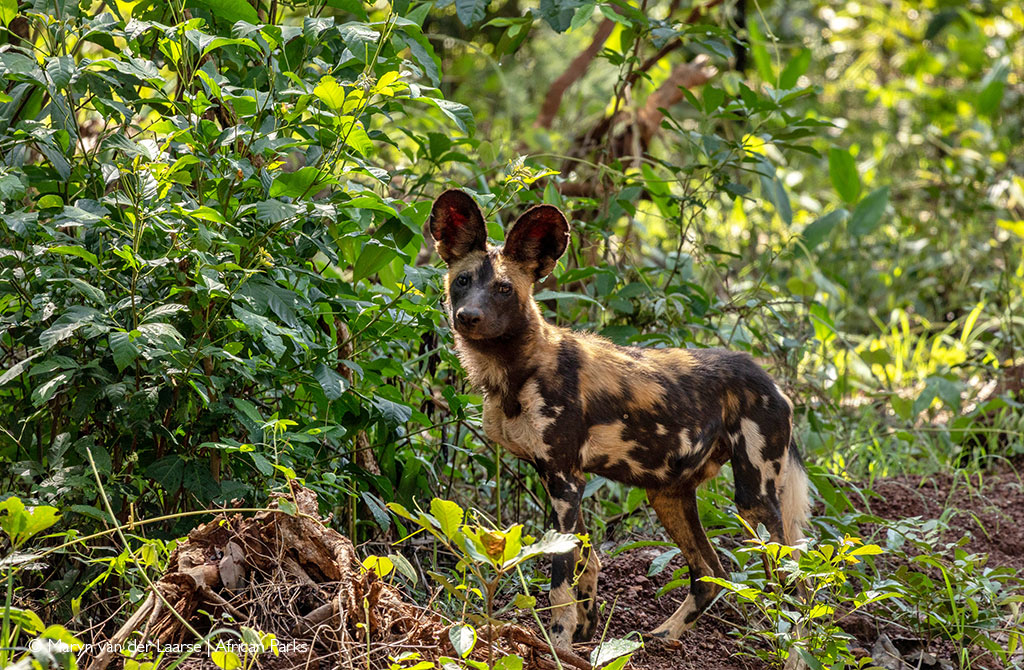

The Chinko River is the only uninhabited tropical river system in the world – not a sign of human habitation for hundreds of kilometres – and is home to a rich diversity of fish species, including the predatory Goliath tigerfish that’s found only in the Congo River basin, which can grow to 1.5m in size and a hefty 50kgs.
 DID YOU KNOW that African Parks offers safari lodges and campsites where 100% of tourism revenue goes to conservation and local communities? You can view and book accommodation to various African Parks destinations by clicking here.
DID YOU KNOW that African Parks offers safari lodges and campsites where 100% of tourism revenue goes to conservation and local communities? You can view and book accommodation to various African Parks destinations by clicking here.
But Chinko still has its challenges. With the current civil war in Sudan, thousands of refugees are pouring over the border from the nearby Darfur province and hundreds-strong cattle herds still pose an ever-present risk to conservation efforts.
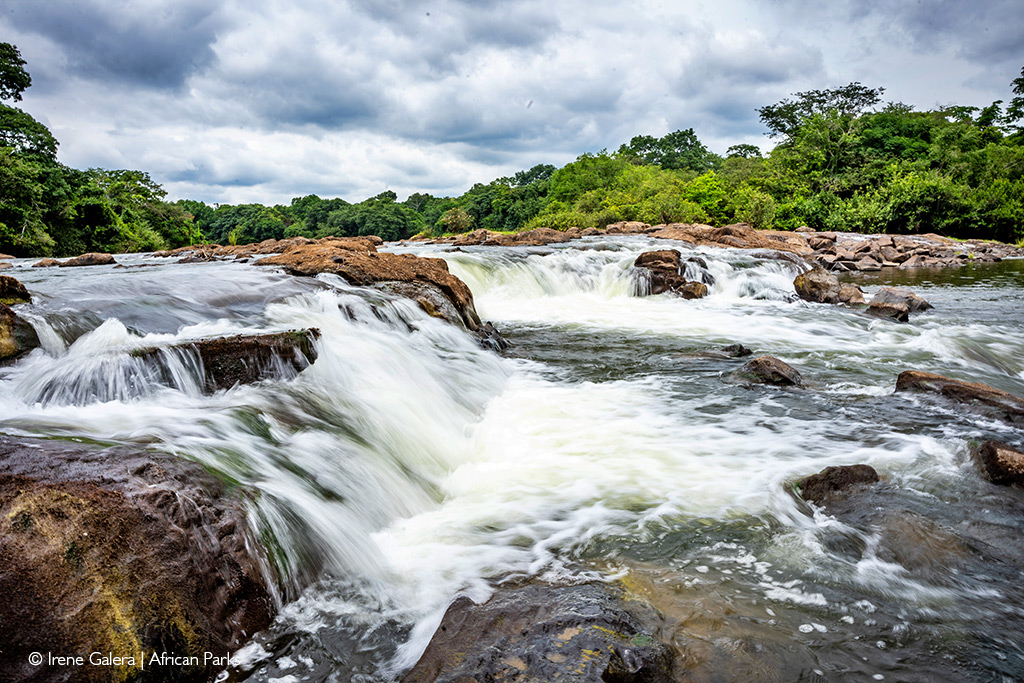
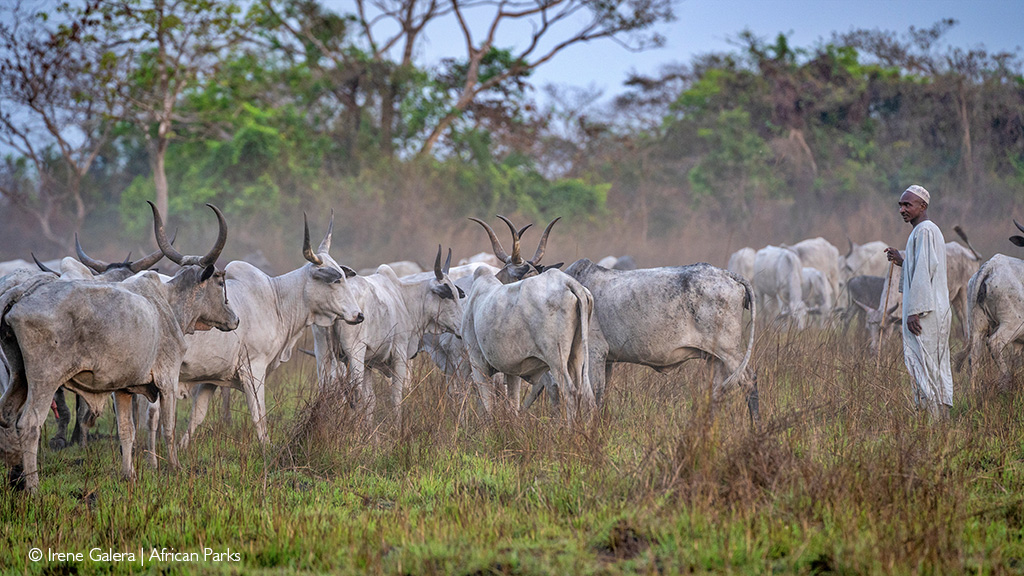
We’re inspired by the peaceful ‘Words, not Weapons’ approach that Chinko has adopted to engage with the nomadic herders. Dedicated Tango Teams (easily identifiable in bright yellow hats and non-camo gear) track and visit the nomad camps, explain the park’s boundaries and guide cattle herders to designated corridors that avoid sensitive wildlife areas. One night, after a simple meal at Jean Baptiste’s house, we watch a new Chinko documentary that showcases their work.
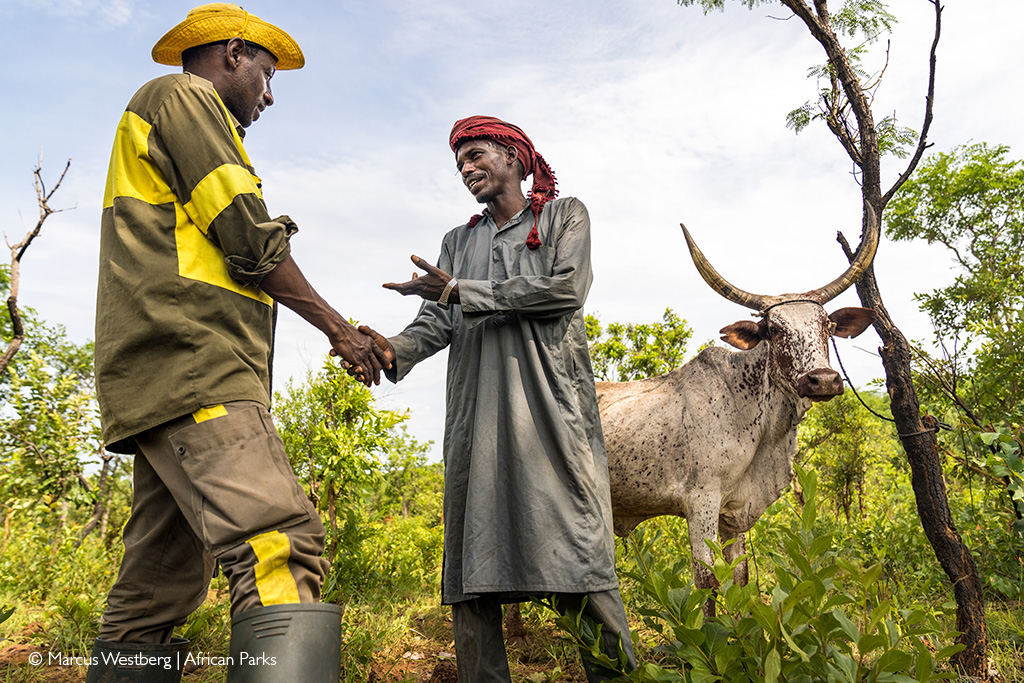
Up at sunrise the next morning to fly like a bird with Erik in his old microlight, following the meandering Chinko River as tree branches flash past in the near-touching distance, is a mind-blowing, never-to-be-forgotten experience. The rising mist in the undulating valleys and panoramic views of the tall, dense Congolian rainforest and wooded savannahs that make up the vast expanse of Chinko are indescribably magnificent.
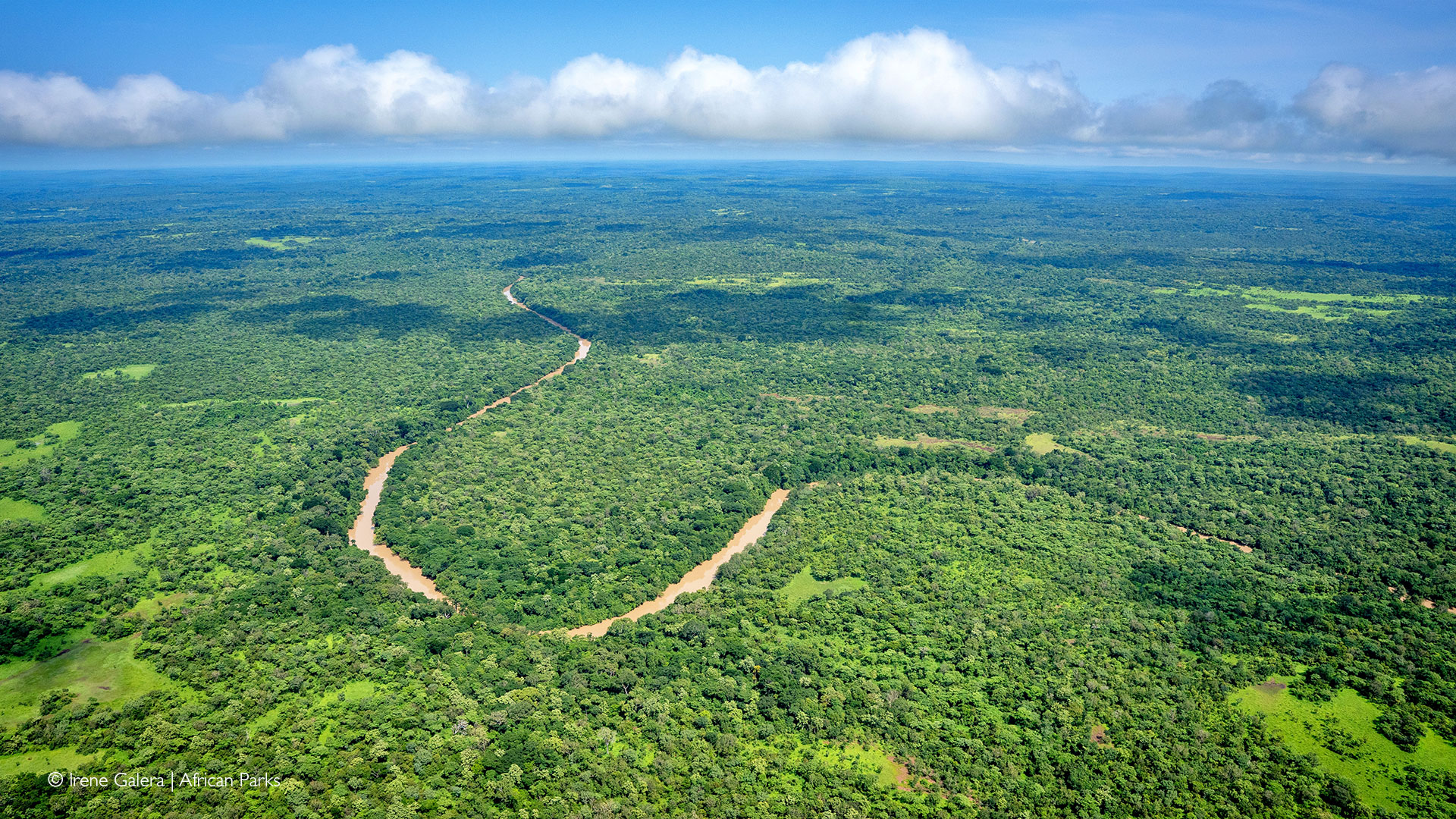
On one of the last pages of the expedition’s Scroll for Conservation, that is now bursting with thousands of supportive messages from across Africa, Chinko’s resident biologist, Thierry Aebischer, writes:
‘Chinko is one of the most forbidding and forgotten places on the planet. After centuries of neglect, the CAR government, African Parks and many partners, including adjacent communities, have finally been able to start managing this Crown Jewel of diverse biodiversity on a large scale, ensuring that local people really can benefit from their natural resources. Chinko’s history is dark, the challenges are real, but the potential for nature and people is huge. It’s a privilege to work here and see a Phoenix reemerging from the ashes.’
Maybe we have saved the best till last.
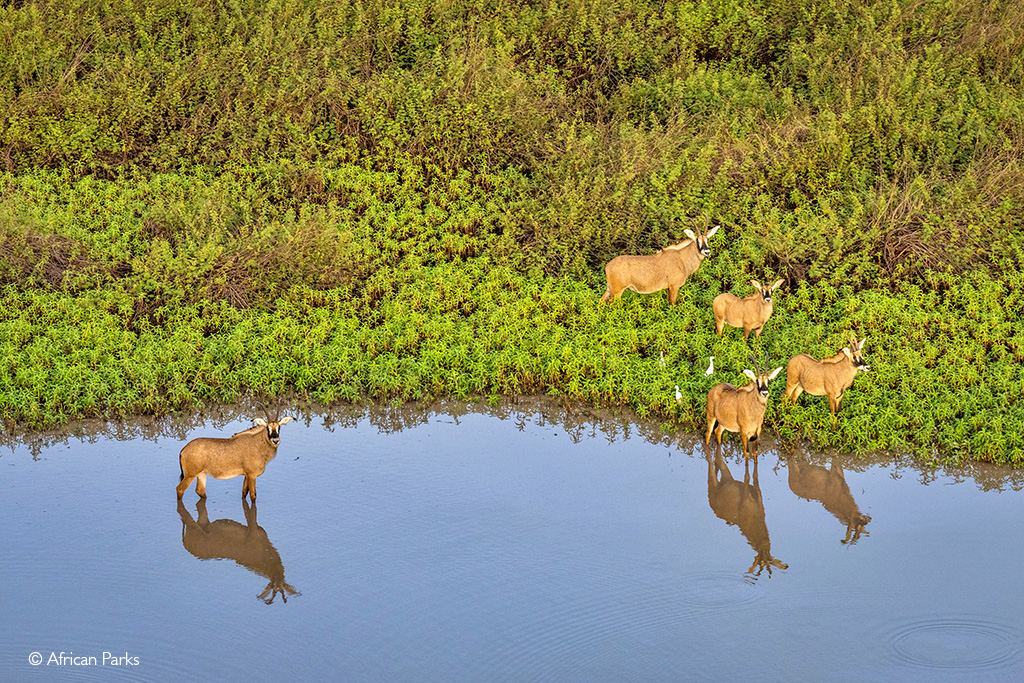
Mission accomplished?
For this Afrika Odyssey expedition, reaching Chinko in the CAR is a hard-won ‘Mission Accomplished’ milestone. The dots on the map of all 22 African Parks-managed areas with over 20 million hectares under protection are finally ticked off. This epic year+-long journey into the beating heart of Africa’s most iconic wildlife regions to uncover stories of hope is done and dusted.
Or so we thought. African Parks has been busy in the months since we set out; there’s a new, extraordinary project we must visit before the final wrap-up can take place.
Further reading
Last seen over 20 years ago, the Pousargues’s mongoose was recently rediscovered in the Chinko Project Area. Read more about the discovery.
African Parks took over management of the 5,5 million hectare Chinko basin in 2020. Read about the historic partnership here.
To comment on this story: Login (or sign up) to our app here - it's a troll-free safe place 🙂.![]()




